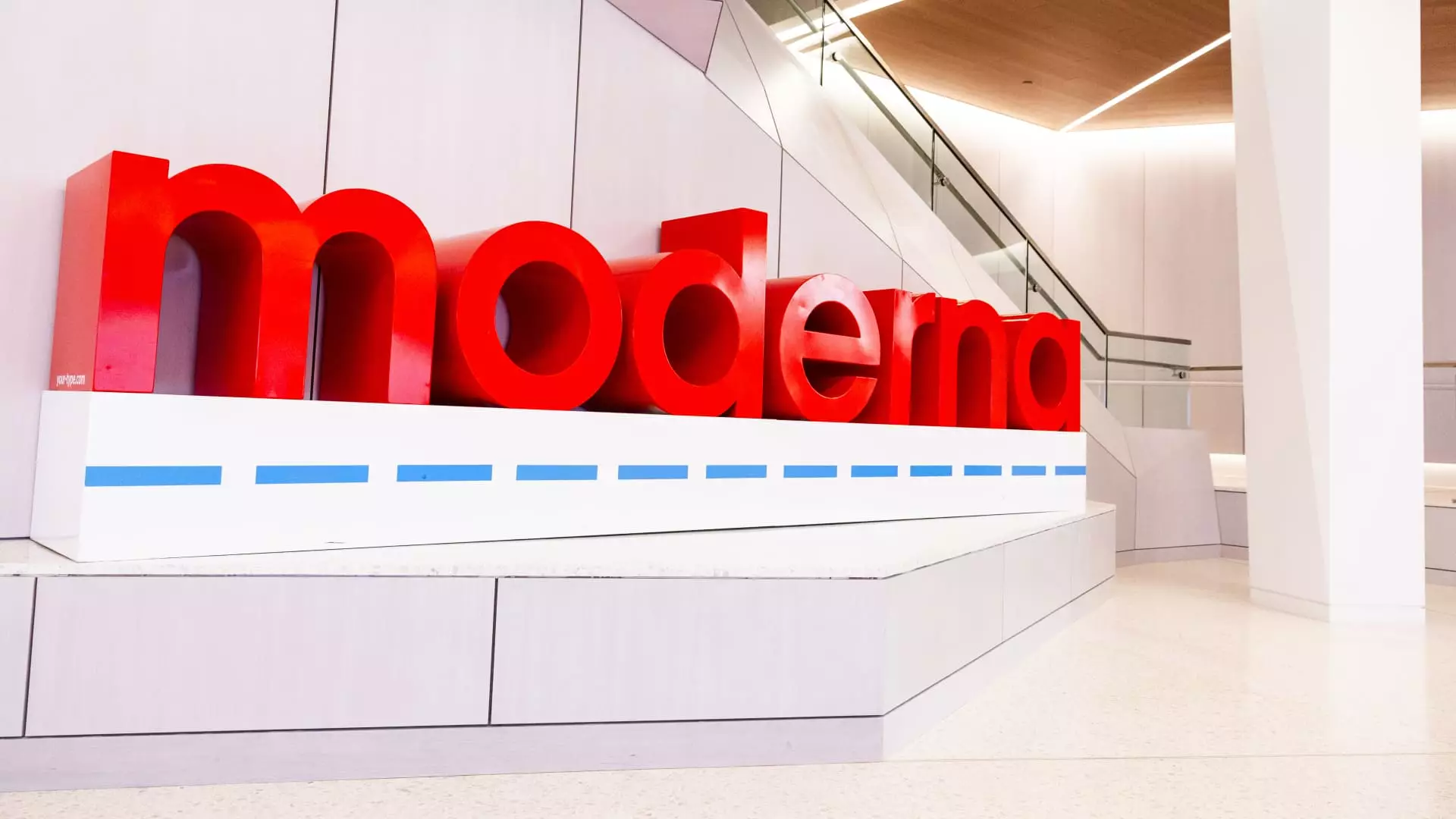Moderna, the biotech company that first captured global attention with its groundbreaking COVID-19 vaccine, reported its fourth-quarter earnings for 2024, showcasing a paradox of higher revenue but substantial losses. As the pandemic-driven boom subsides, Moderna finds itself in a critical phase of recalibrating its strategies while dealing with a market that no longer guarantees the same demand for its once-celebrated product. This article delves into the financial findings, challenges, and projected future for Moderna in an evolving vaccine landscape.
Financial Overview: A Mixed Bag
In the latest financial report, Moderna disclosed a net loss of $1.12 billion, equating to $2.91 per share, a stark contrast to the net income of $217 million or 55 cents per share reported in the same quarter of the previous year. While revenue figures of $966 million slightly exceeded analyst expectations, they still reflect a dramatic decline, down from $2.8 billion year-over-year. Most of this revenue was attributed to the COVID-19 vaccine, which alone generated $923 million—66% less than the previous year, a stark indication of dwindling market demand.
Despite these losses, CFO Jamey Mock pointed out a noteworthy reduction in costs, claiming a 27% decrease compared to 2023. The company plans to trim an additional $1 billion in costs by the end of 2025. This cost-cutting strategy is part of Moderna’s broader effort to stabilize itself following the COVID windfall that has since dissipated.
As the demand for the COVID vaccine diminishes, Moderna faces the harsh reality of competition and a significant drop in vaccination rates. The decline in revenue underscores how the anticipation from last year has transformed into an unfulfilled need for the product, prompting a recalibration of expectations. The company initially projected significantly higher sales figures but reduced its 2025 sales guidance by approximately $1 billion earlier this year, a decision that coincided with a steep drop – over 20% – in stock value.
Mock acknowledged the potential hurdles the company may encounter. He emphasized the importance of regulatory recommendations and the competitive landscape, which could place additional strain on sales projections, particularly as vaccine uptake ebbs.
Cost Management: Taming the Beast
In response to its operational losses, Moderna is implementing aggressive cost management strategies, notably reducing operational expenditures across the board. With research and development costs dipping to $1.1 billion—a 20% decrease compared to the previous year—the company is exercising caution while investing in potential future products, including a combo vaccine targeting COVID-19 and flu, as well as RSV vaccines targeting older adults.
The company’s ability to navigate its financial landscape effectively appears to hinge on balancing cost-cutting measures with necessary investments in new technologies and products. This strategic balancing act is essential for maintaining its market position while ensuring long-term growth.
Examining future opportunities, Moderna has a robust pipeline built on its well-regarded messenger RNA platform. The company has high stakes in rolling out various new mRNA-based products over the next few years. With three mRNA products submitted for regulatory approval by the end of the fourth quarter, including innovative vaccine forms, Moderna is aiming to diversify its portfolio and renew investor confidence.
There’s cautious optimism surrounding upcoming product approvals, particularly its next-generation COVID shot expected in May 2025 and an expanded RSV shot in June. These developments, if successful, could serve as pivotal turning points for the company, allowing it to pivot away from its dependence on its COVID vaccine alone.
As Moderna navigates the tumultuous waters of a post-pandemic world, the company’s path is laden with both challenges and opportunities. While current figures speak to a struggle, the adoption of strategic cost management and an expansive product pipeline may lay the groundwork for a future renaissance. How effectively Moderna capitalizes on these prospects while weathering the storms of industry challenges will ultimately define its course in the years to come. For investors and stakeholders alike, the evolving narrative at Moderna serves as a stark reminder of the volatility inherent in biotech markets, especially in transitional periods such as this.

